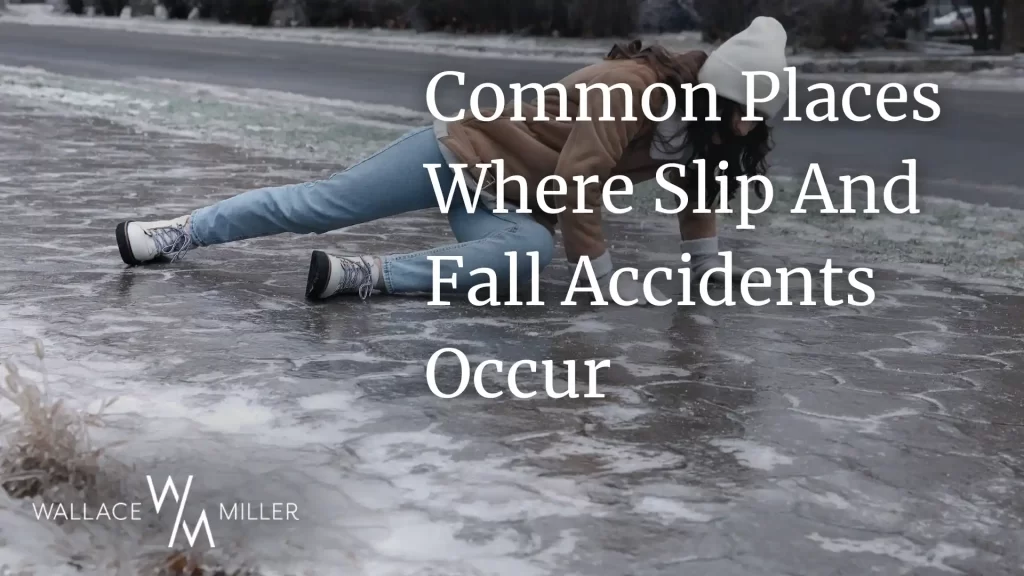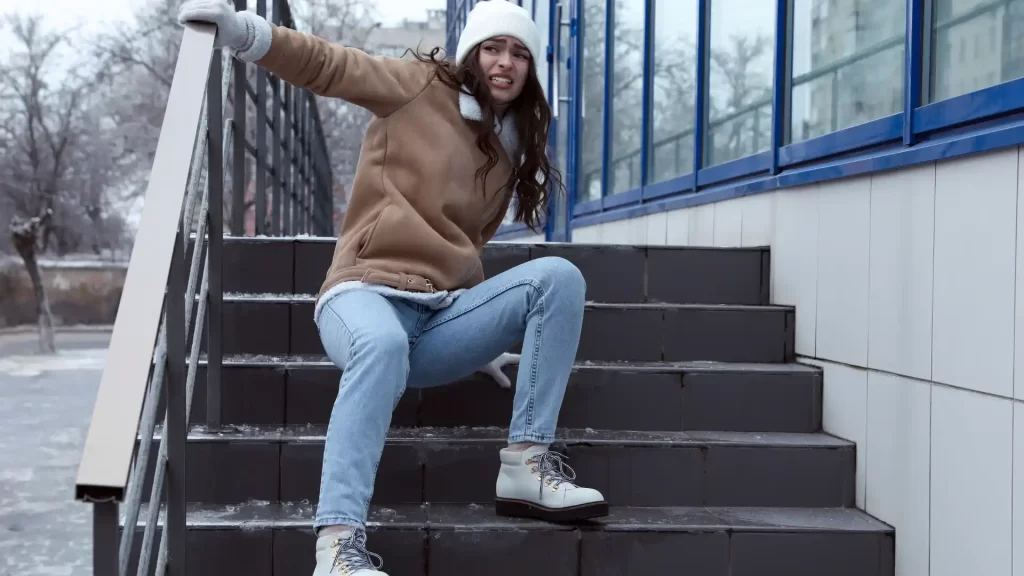Posted on Saturday, January 20th, 2024 at 5:01 pm

Slip and fall accidents can happen virtually anywhere, from private residences to public spaces. However, some locations pose a higher risk for these incidents due to various factors, such as high foot traffic, the presence of potential hazards, or the nature of the activities taking place.
Understanding the common places where slip and fall accidents occur can help you stay vigilant and take steps to protect yourself from injury. If you do suffer a slip and fall due to a property owner’s negligence, it’s crucial to know your legal rights and options for seeking compensation.
High-Risk Areas for Slip and Fall Accidents
Certain locations are more prone to slip and fall accidents than others. Some of the most common places where these incidents occur include:
- Grocery stores and supermarkets: Spills, leaks, and wet floors from cleaning or refrigeration equipment can create slippery surfaces that lead to falls.
- Restaurants and bars: Similar to grocery stores, spills, and wet floors are common hazards in restaurants and bars. Additionally, dim lighting and crowded spaces can contribute to slip and fall risks.
- Parking lots and garages: Potholes, cracks, uneven surfaces, and poor lighting can make parking areas treacherous for pedestrians, particularly during inclement weather.
- Sidewalks and walkways: Cracked or uneven pavement, tree roots, and snow or ice accumulation can cause pedestrians to trip and fall.
- Stairways: Worn or loose stair treads, missing or broken handrails, and inadequate lighting can make navigating stairs hazardous.
- Shopping malls and retail stores: Slippery floors, cluttered aisles, and changes in flooring surfaces can contribute to slip and fall accidents in retail environments.
- Workplaces: Depending on the industry, workplace slip and fall hazards may include wet or oily floors, loose cords or wires, and debris or clutter in walkways.
Property owners in these high-risk areas have a legal duty to maintain safe premises and address potential hazards promptly to prevent accidents.
Preventing Slip and Falls in Public Spaces
While property owners bear the primary responsibility for maintaining safe environments, there are steps you can take to reduce your risk of suffering a slip and fall accident in public spaces:
- Wear appropriate footwear: Choose shoes with good traction and avoid high heels or smooth-soled shoes when navigating potentially slippery surfaces.
- Pay attention to your surroundings: Stay alert and watch for potential hazards, such as wet floor signs, uneven surfaces, or obstacles in your path.
- Use handrails: When ascending or descending stairs, always use the handrail for added stability and support.
- Take your time: Rushing or running can increase your risk of slipping or tripping, especially in crowded or unfamiliar areas.
- Report hazards: If you notice a dangerous condition, such as a spill or broken pavement, report it to the property owner or manager promptly.
By exercising caution and staying aware of your surroundings, you can minimize your risk of becoming involved in a slip and fall accident.
Liability for Slip and Fall Accidents
When a slip and fall accident occurs due to a property owner’s negligence, the owner may be held liable for the victim’s injuries and related damages. To establish liability, the injured party generally must prove that:
- The property owner owed them a duty of care.
- The property owner breached that duty by failing to maintain safe premises or warn of potential hazards.
- The breach of duty directly caused the victim’s slip and fall accident and resulting injuries.
- The victim suffered actual damages, such as medical expenses, lost wages, or pain and suffering.
The specific rules and requirements for proving liability may vary depending on the location and circumstances of the accident. For example, in some cases, the victim may need to demonstrate that the property owner knew or should have known about the hazardous condition and failed to address it in a timely manner.
Slip and Fall Accident Locations and Legal Considerations
 The location of a slip and fall accident can impact the legal considerations and strategies for pursuing compensation. For example:
The location of a slip and fall accident can impact the legal considerations and strategies for pursuing compensation. For example:
- Commercial properties: Businesses have a higher duty of care to ensure the safety of their customers and visitors. Victims may have a stronger case against a commercial property owner who fails to address known hazards or conduct regular inspections.
- Government properties: Slip and fall accidents on government-owned properties, such as public sidewalks or buildings, may be subject to special rules and shorter deadlines for filing claims.
- Residential properties: Homeowners have a duty to maintain safe premises for invited guests, but the specific obligations may vary based on the visitor’s status (e.g., a social guest vs. a hired contractor).
An experienced slip and fall attorney can help you navigate the legal complexities and build a strong case based on the specific circumstances of your accident.
Contact a Slip and Fall Attorney Today
Slip and fall accidents can happen in a wide range of locations, from grocery stores and restaurants to sidewalks and workplaces. By understanding the common places where these incidents occur and taking steps to protect yourself, you can reduce your risk of injury.
If you’ve been hurt in a slip and fall accident due to a property owner’s negligence, the knowledgeable attorneys at Wallace Miller are here to help. Contact us at (312) 261-6193 for a free consultation, and let us fight for the compensation you deserve.
